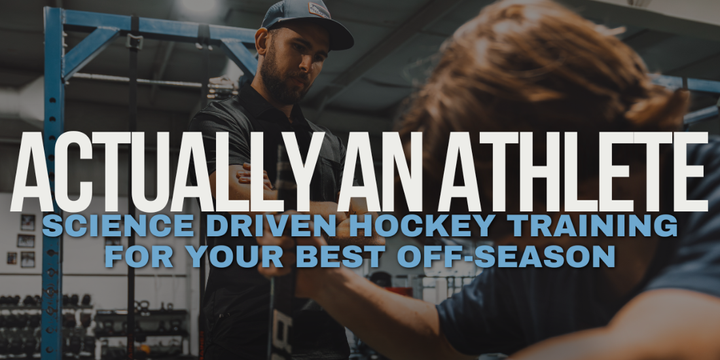- Phillips Performance Playbook
- Posts
- Rotational Power: The Missing Link in Your On-Ice Explosiveness
Rotational Power: The Missing Link in Your On-Ice Explosiveness
Most players train their “core” by doing crunches or planks—but that’s not how the core functions in hockey.
Whether you’re ripping a shot, throwing a stretch pass, or absorbing contact at the blue line, hockey is a rotational sport. The core isn’t just about stability—it’s about transferring power between your lower and upper body.
And that means you need to train it like an athlete.
Although there is a time for “classic” ab work.
Why Rotational Power Matters
For Players
Every powerful shot or pass starts with your legs—but the transfer of that force comes through your torso. If you don’t train that connection, you lose energy between your base and your hands.
Training rotational power helps you:
Fire harder, more accurate shots
Pass with more velocity and control
Win puck battles by absorbing and redirecting force
For Goalies
Rotation happens constantly—even if it’s more subtle. Goalies use torso rotation to:
Snap into T-pushes and recoveries
Track pucks on lateral plays
Clear rebounds with power and control
Maintain balance under dynamic load
A goalie with a weak or untrained core won’t just lose power—they’ll lose control.
I would argue that goalies may need it MORE since being in the butterfly eliminates a lot of the lower extremity musculature needed in power development and stabilization.
What the Research Shows
Studies show that training rotational strength and power—especially with dynamic, multi-joint movements—leads to better sports performance outcomes, particularly in high-velocity tasks like swinging, throwing, and shooting.¹
Hockey-specific applications of core power correlate with increased shot velocity and improved trunk control during gameplay.²
Best Ways to Train Rotational Power
1. Medicine Ball Rotational Throws
– Side-to-wall throws
– Rotational scoop tosses
– Overhead slams with rotation
Focus on speed, fluidity, and full-body involvement.
2. Anti-Rotation Core Work
– Pallof presses
– Banded holds
– Split stance cable chops
These improve control and balance, especially under load or contact.
3. Split-Stance Power Exercises
– Landmine rotational presses
– Offset kettlebell lunges
– Cable rotations
Helps you transfer power from the ground up in game-like patterns.
4. Goalies: Add Rotation to Stability Work
– Half-kneeling med ball tosses
– Reactive banded core work
– Anti-rotation holds with leg movement
Build rotation without sacrificing control or postural alignment.
Key Takeaways
Rotational power is a core skill for hockey players and goalies
It improves shot velocity, pass strength, puck control, and lateral explosiveness
Training rotation = training how you actually move on the ice
Use med balls, cables, and banded drills to train both rotation and anti-rotation
Build control first, then layer in speed and force
Train Smarter This Summer
If you need a training program that takes all the guesswork out of your gym time, check out my Actually An Athlete Program
Dr. Jamie
Ghost Rehab and Performance | Elite Goalie Method

References (AMA Format)
Behm DG, Drinkwater EJ, Willardson JM, Cowley PM. Canadian Society for Exercise Physiology position stand: The use of instability to train the core in athletic and nonathletic conditioning. Appl Physiol Nutr Metab. 2010;35(1):109-112.
Bracko MR. Biomechanics powers ice hockey performance. Strength Cond J. 2004;26(6):63–69.
Cissik JM, Barnes M. Developing core strength. Strength Cond J. 2004;26(2):10–11.
30 in 30 | 22/30
